On this page
Evolution of birdsThis page lists books about the evolution of birds and more general books about evolution that include sections about birds.The books are listed by publication date with the most recent at the top.
|
|
|
|
The Biology of the Avian Respiratory System: Evolution, Development, Structure and FunctionEditor: John N. Maina
Springer Verlag
2017
"The central focus of this book is the avian respiratory system. The authors explain why the respiratory system of modern birds is built the way it is and works the way that it does. Birds have been and continue to attract particular interest to biologists. The more birds are studied, the more it is appreciated that the existence of human-kind on earth very much depends directly and indirectly on the existence of birds. Regarding the avian respiratory system, published works are scattered in biological journals of fields like physiology, behavior, anatomy/morphology and ecology while others appear in as far afield as paleontology and geology. The contributors to this book are world-renowned experts in their various fields of study. Special attention is given to the evolution, the structure, the function and the development of the lung-air sac system. Readers will not only discover the origin of birds but will also learn how the respiratory system of theropod dinosaurs worked and may have transformed into the avian one. In addition, the work explores such aspects as swallowing mechanism in birds, the adaptations that have evolved for flight at extreme altitude and gas exchange in eggs."
|
Buy from amazon.co.uk 
|
|
Avian Evolution: The Fossil Record of Birds and Its Paleobiological SignificanceGerald Mayr
Topics In Paleobiology
Wiley-Blackwell
2016
"Knowledge of the evolutionary history of birds has much improved in recent decades. Fossils from critical time periods are being described at unprecedented rates and modern phylogenetic analyses have provided a framework for the interrelationships of the extant groups. This book gives an overview of the avian fossil record and its paleobiological significance, and it is the only up–to–date textbook that covers both Mesozoic and more modern–type Cenozoic birds in some detail. The reader is introduced to key features of basal avians and the morphological transformations that have occurred in the evolution towards modern birds. An account of the Cenozoic fossil record sheds light on the biogeographic history of the extant avian groups and discusses fossils in the context of current phylogenetic hypotheses. This review of the evolutionary history of birds not only addresses students and established researchers, but it may also be a useful source of information for anyone else with an interest in the evolution of birds and a moderate background in biology and geology."
|
Buy from amazon.co.uk 
|
|
Eco-evolutionary DynamicsAndrew P. Hendry
Princeton University Press
2016
"In recent years, scientists have realized that evolution can occur on timescales much shorter than the "long lapse of ages" emphasized by Darwin--in fact, evolutionary change is occurring all around us all the time. This book provides an authoritative and accessible introduction to eco-evolutionary dynamics, a cutting-edge new field that seeks to unify evolution and ecology into a common conceptual framework focusing on rapid and dynamic environmental and evolutionary change. Andrew Hendry covers key aspects of evolution, ecology, and their interactions. Topics range from natural selection, adaptive divergence, ecological speciation, and gene flow to population and community dynamics, ecosystem function, plasticity, and genomics."
|
Buy from amazon.co.uk 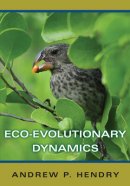
|
|
Snowbird: Integrative Biology and Evolutionary Diversity in the JuncoEditor: Ellen D. Ketterson, Jonathan W. Atwell
University of Chicago Press
2016
"While common and widespread, juncos also exhibit extraordinary diversity in color, shape, size, and behavior across their range, making them ideal study subjects for biologists interested in ecology and evolutionary diversification. Intended for scholars, citizen scientists, and amateur ornithologists, alike, Snowbird synthesizes decades of research from the diverse and talented researchers who study the Junco genus. Though contributors approach their subject from a variety of perspectives, they share a common goal: elucidating the organismal and evolutionary processes by which animals adapt and diversify in response to environmental change. Placing special emphasis on the important role that underlying physiological, hormonal, and behavioral mechanisms play in these processes, Snowbird not only provides a definitive exploration of the junco’s evolutionary history and behavioral and physiological diversity but also underscores the junco’s continued importance as a model organism in a time of rapid global climate change. By merging often disparate biological fields, Snowbird offers biologists across disciplines an integrative framework for further research into adaptation, population divergence, and the formation of new species."
|
Buy from amazon.co.uk 
|
|
The Rise of Birds: 225 Million Years of EvolutionSankar Chatterjee
Johns Hopkins University Press
2nd edition
2015
"This second edition of The Rise of Birds brings together a treasure trove of fossils that tell us far more about the evolution of birds than we once dreamed possible. With no blind allegiance to what he once thought he knew, Chatterjee devours the new evidence and lays out the most compelling version of the birth and evolution of the avian form ever attempted. He takes us from Texas to Spain, China, Mongolia, Madagascar, Australia, Antarctica, and Argentina. He shows how, in the "Cretaceous Pompeii" of China, he was able to reconstruct the origin and evolution of flight of early birds from the feathered dinosaurs that lay among thousands of other amazing fossils. Chatterjee takes us to where long-hidden bird fossils dwell. His compelling, occasionally controversial, revelations—accompanied by spectacular illustrations—are a must-read for anyone with a serious interest in the evolution of "the feathered dinosaurs," from vertebrate paleontologists and ornithologists to naturalists and birders."
|
Buy from amazon.co.uk 
|
|
40 Years of Evolution: Darwin's Finches on Daphne Major IslandPeter R. Grant and B. Rosemary Grant
Princeton University Press
2014
"Renowned evolutionary biologists Peter and Rosemary Grant have produced landmark studies of the Galápagos finches first made famous by Charles Darwin. In How and Why Species Multiply, they offered a complete evolutionary history of Darwin's finches since their origin almost 3 million years ago. Now, in their richly illustrated new book, 40 Years of Evolution, the authors turn their attention to events taking place on a contemporary scale. By continuously tracking finch populations over a period of four decades, they uncover the causes and consequences of significant events leading to evolutionary changes in species. The authors used a vast and unparalleled range of ecological, behavioral, and genetic data - including song recordings, DNA analyses, and feeding and breeding behavior – to measure changes in finch populations on the small island of Daphne Major in the Galápagos archipelago. They find that natural selection happens repeatedly, that finches hybridize and exchange genes rarely, and that they compete for scarce food in times of drought, with the remarkable result that the finch populations today differ significantly in average beak size and shape from those of forty years ago. The authors' most spectacular discovery is the initiation and establishment of a new lineage that now behaves as a new species, differing from others in size, song, and other characteristics. The authors emphasize the immeasurable value of continuous long-term studies of natural populations and of critical opportunities for detecting and understanding rare but significant events."
|
Buy from amazon.co.uk 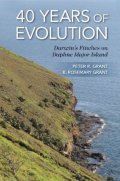
|
|
Evolutionary Biomechanics: Selection, Phylogeny and ConstraintGraham K. Taylor and Adrian L.R. Thomas
Oxford Series in Ecology & Evolution
Oxford University Press
2013
"Evolutionary biomechanics is the study of evolution through the analysis of biomechanical systems. Its unique advantage is the precision with which physical constraints and performance can be predicted from first principles. Instead of reviewing the entire breadth of the biomechanical literature, a few key examples are explored in depth as vehicles for discussing fundamental concepts, analytical techniques, and evolutionary theory. Each chapter develops a conceptual theme, developing the underlying theory and techniques required for analyses in evolutionary biomechanics. Examples from terrestrial biomechanics, metabolic scaling, and bird flight are used to analyse how physics constrains the design space that natural selection is free to explore, and how adaptive evolution finds solutions to the trade-offs between multiple complex conflicting performance objectives."
|
Buy from amazon.co.uk 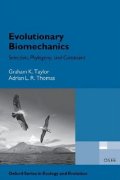
|
|
Birds: Evolution and Behavior, Breeding Strategies, Migration and Spread of DiseaseEditor: Lucas Ruiz and Franco Iglesias
Nova Science Publishers
2013
"In this book, the authors present current research in the study of the evolution and behavior, breeding strategies, migration and spread of disease within the bird species. Topics discussed in this compilation include sex determination in birds; structure and function of the avian respiratory system, with discussion regarding its predisposition to injury by particulates and pathogenic microorganisms; distribution and dispersion of coccidia in wild passerines of the Americas; an animal geography of the dominant urban avian scavenger in contrasting case studies; recent infectious diseases or their responsible agents recorded from Japanese wild birds; ticks on Brazilian birds; an overview of recent parasitic diseases due to helminths and arthropods recorded from wild birds, with special reference to conservation medical cases from the Wild Animal Medical Center of Rakuno Gakuen University in Japan; environmental factors that affect urban avian communities; and the impact of landscape configuration and competitors on hooded vulture necrosyrtes monarchus temminck 1823 in Southern Ghana."
|
Buy from amazon.co.uk 
|
|
The Evolution of Parental CareEditor: Nick J. Royle, Per T. Smiseth, and Mathias Kölliker
Oxford University Press
2012
"Parental care includes a wide variety of traits that enhance offspring development and survival. It is taxonomically widespread and is central to the maintenance of biodiversity through its close association with other phenomena such as sexual selection, life-history evolution, sex allocation, sociality, cooperation and conflict, growth and development, genetic architecture, and phenotypic plasticity. This novel book provides a fresh perspective on the study of the evolution of parental care based on contributions from some of the top researchers in the field. It provides evidence that the dynamic nature of family interactions, and particularly the potential for co-evolution among family members, has contributed to the great diversity of forms of parental care and life-histories across as well as within taxa."
|
Buy from amazon.co.uk 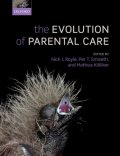
|
|
Stray Feathers: Reflections on the Structure, Behaviour and Evolution of BirdsPenny Olsen and Leo Joseph
CSIRO
2011
"Stray Feathers showcases some of the remarkable adaptations of Australian birds. A brief introduction describes how evolution shapes form and function, followed by a series of vignettes illustrating the wondrous variety of forms and functions shaped by evolution. For example, did you know that Barn Owls can hunt in absolute darkness and that cuckoos commence incubation before their egg is laid? Sections include anatomy and physiology; the senses; giving voice; tongues talking; plumage; getting around; finding and handling food; optimising foraging and feeding; reducing competition; using ‘tools'; communicating; quality vs quantity; courtship; nests; parental care; chicks; and living together."
|
Buy from amazon.co.uk 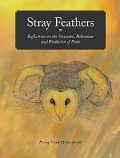
|
|
Convergent Evolution: Limited Forms Most BeautifulGeorge McGhee
Vienna Series in Theoretical Biology
MIT Press
2011
"Charles Darwin famously concluded On the Origin of Species with a vision of "endless forms most beautiful" continually evolving. More than 150 years later many evolutionary biologists see not endless forms but the same, or very similar, forms evolving repeatedly in many independent species lineages. A porpoise's fishlike fins, for example, are not inherited from fish ancestors but are independently derived convergent traits. In this book, George McGhee describes the ubiquity of the phenomenon of convergent evolution and connects it directly to the concept of evolutionary constraint - the idea that the number of evolutionary pathways available to life are not endless, but quite limited. Convergent evolution occurs on all levels, from tiny organic molecules to entire ecosystems of species. McGhee demonstrates its ubiquity in animals, both herbivore and carnivore; in plants; in ecosystems; in molecules, including DNA, proteins, and enzymes; and even in minds, describing problem-solving behavior and group behavior as the products of convergence. For each species example, he provides an abbreviated list of the major nodes in its phylogenetic classification, allowing the reader to see the evolutionary relationship of a group of species that have independently evolved a similar trait by convergent evolution. McGhee analyzes the role of functional and developmental constraints in producing convergent evolution, and considers the scientific and philosophical implications of convergent evolution for the predictability of the evolutionary process."
|
Buy from amazon.co.uk 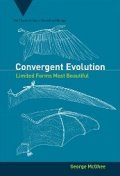
|
|
Cladistics and the Origin of Birds: A Review and Two New AnalysesFrances C James and John A Pourtless
Ornithological Monographs 66
American Ornithologists' Union
2010
A 78 page paper.
|
Buy from amazon.co.uk 
|
|
Evolution: The First Four Billion YearsEditor: Michael Ruse, Joseph Travis
Forword: E.O. Wilson
Harvard University Press
2009
"Spanning evolutionary science from its inception to its latest findings, from discoveries and data to philosophy and history, this book is the most complete, authoritative, and inviting one-volume introduction to evolutionary biology available. Clear, informative, and comprehensive in scope, "Evolution" opens with a series of major essays dealing with the history and philosophy of evolutionary biology, with major empirical and theoretical questions in the science, from speciation to adaptation, from paleontology to evolutionary development (evo devo), and concluding with essays on the social and political significance of evolutionary biology today. A second encyclopedic section travels the spectrum of topics in evolution with concise, informative, and accessible entries on individuals from Aristotle and Linneaus to Louis Leakey and Jean Lamarck; from T.H. Huxley and E.O. Wilson to Joseph Felsenstein and Motoo Kimura; and on subjects from altruism and amphibians to evolutionary psychology and Piltdown Man to the Scopes trial and social Darwinism. Readers will find the latest word on the history and philosophy of evolution, the nuances of the science itself, and the intricate interplay among evolutionary study, religion, philosophy, and society."
|
Buy from amazon.co.uk 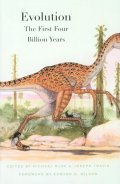
|
|
The Inner Bird: Anatomy and EvolutionGary W. Kaiser
University of British Columbia Press
2007
"The Inner Bird introduces readers to the avian skeleton, then moves beyond anatomy to discuss the relationships between birds and dinosaurs and other early ancestors. Gary Kaiser examines the challenges scientists face in understanding avian evolution - even recent advances in biomolecular genetics have failed to provide a clear evolutionary story. Using examples from recently discovered fossils of birds and near-birds, Kaiser describes an avian history based on the gradual abandonment of dinosaur-like characteristics, and the related acquisition of avian characteristics such as sophisticated flight techniques and the production of large eggs. Such developments have enabled modern birds to invade the oceans and to exploit habitats that excluded dinosaurs for millions of years.While ornithology is a complex discipline that draws on many fields, it is nevertheless burdened with obsolete assumptions and archaic terminology. The Inner Bird offers modern interpretations for some of those ideas and links them to more current research. It should help anyone interested in birds to bridge the gap between long-dead fossils and the challenges faced by living species."
|
Buy from amazon.co.uk 
|
|
Festschrift for Ned K. Johnson: Geographic Variation and Evolution in BirdsEditor: Carla Cicero and JV Remsen
Ornithological Monographs 63
American Ornithologists' Union
2007
Contents:
- A Tribute to the Career of Ned K. Johnson: Enduring Standards through Changing Times
- Molecular Advances in the Study of Geographic Variation and Speciation in Birds
- Vainly Beating the Air: Species-Concept Debates Need Not Impede Progress in Science or Conservation
- Named Subspecies and Their Significance in Contemporary Ornithology
Distributional Dynamics of Invasion and Hybridization by Strix spp. in Western North America
- Divergence between Subspecies Groups of Swainson's Thrush (Catharus ustulatus ustulatus and C. U. swainsoni)
- Narrow Contact of Desert Sage Sparrows (Amphispiza belli nevadensis and A. B. canescens) in Owens Valley, Eastern California: Evidence from Mitochondrial DNA, Morphology, and GIS-Based Niche Models
- Statistical Assessment of Congruence among Phylogeographic Histories of Three Avian Species in the California Floristic Province
- The "Walking Eagle" Wetmoregyps Daggetti Miller: A Scaled-up Version of the Savanna Hawk (Buteogallus meridionalis)
|
Buy from amazon.co.uk 
|
|
The Tree of Life: A Phylogenetic Classification
Guillaume Lecointre and Hervé Le Guyader
Harvard University Press
2007
"Did you know that you are more closely related to a mushroom than to a daisy? That crocodiles are closer to birds than to lizards? That dinosaurs are still among us? That the terms "fish," "reptiles," and "invertebrates" do not indicate scientific groupings? All this is the result of major changes in classification, whose methods have been totally revisited over the last thirty years. Modern classification, based on phylogeny, no longer places humans at the centre of nature. Groups of organisms are no longer defined by their general appearance, but by their different individual characteristics. Phylogeny, therefore, by showing common ancestry, outlines a tree of evolutionary relationships from which one can retrace the history of life. This book diagrams the tree of life according to the most recent methods of classification. Each branch of the tree is a group that includes the hypothetical ancestor and all its descendants. The basis for classification is the evolutionary adaptations that the unique ancestor passed to its modern-day descendants. By showing how life forms arose and developed and how they are related, "The Tree of Life" presents a key to the living world in all its dazzling variety."
|
Buy from amazon.co.uk 
|
|
The Discovery of EvolutionDavid Young
Cambridge University Press in association with the Natural History Museum
2nd edition
2007
"Beginning with the emergence of the early naturalists in the seventeenth century, the scientific discoveries that led up to, and then flowed from, Darwin and Wallace's theory of evolution by natural selection are discussed, and the modern evolutionary studies at the close of the twentieth century are detailed. This new edition of the Discovery of Evolution is fully updated and contains a new chapter on the evolutionary studies of the twentieth century. By approaching the topic of evolution in this way, it is made accessible to the non-specialist and no previous study of biology is required."
|
Buy from amazon.co.uk 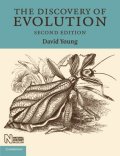
|
|
Bird Coloration, Volume 2: Function and EvolutionEditors: Geoffrey E Hill and Kevin J McGraw
Harvard University Press
2006
"In Volume 2, the authors turn from the problem of how birds see and produce colour and how researchers measure it, to what is the function of the colourful displays of birds and what are the factors that shape the evolution of colour signals. The contributors to this volume begin by examining the function of coloration in a variety of contexts from mate choice, to social signalling, to individual recognition, synthesizing a vast amount of recent findings by researchers around the world. The volume and the series conclude with chapters that consider coloration from an explicitly evolutionary perspective, examining selective pressures that have led to the evolution of colours and patterns on body and plumage. These functional and evolutionary studies build from research on mechanisms of production and controls of expression, covered in the previous volume, bringing the study of colour full circle."
|
Buy from amazon.co.uk 
|
|
Glorified Dinosaurs: The Origin and Early Evolution of BirdsLuis M. Chiappe
University of New South Wales Press
2006
"It is within the last few years that it has been established beyond doubt that birds evolved from dinosaurs, with an unparalleled rate of discoveries of early birds and their dinosaurian predecessors from all over the world. Glorified Dinosaurs provides a summary of these discoveries and a discussion of how modern birds evolved from fearsome meat-eating dinosaurs akin to the celebrated Velociraptor. The book focuses on an evolutionary approach and presents current research and fossil discoveries. The title includes coloured photographs of fossils and fossil localities, many of which have been rarely reproduced elsewhere."
|
Buy from amazon.co.uk 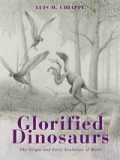
|
|
Amniote Paleobiology: Perspectives on the Evolution of Mammals, Birds, and ReptilesMatthew Carrano
University of Chicago Press
2006
"Living amniotes - including all mammals, birds, crocodilians, snakes, and turtles - comprise an extraordinarily varied array of more than 21,000 species. Found in every major habitat on earth, they possess a truly remarkable range of morphological, ecological, and behavioral adaptations. The fossil record of amniotes extends back three hundred million years and reveals much about modern biological diversity of form and function. A collaborative effort of twenty-four researchers, "Amniote Paleobiology" presents thirteen new and important scientific perspectives on the evolution and biology of this familiar group. It includes new discoveries of dinosaurs and primitive relatives of mammals; studies of mammalian chewing and locomotion; and examinations of the evolutionary process in plesiosaurs, mammals, and dinosaurs. Emphasizing the rich variety of analytical techniques available to vertebrate paleontologists - from traditional description to multivariate morphometrics and complex three-dimensional kinematics - "Amniote Paleobiology" seeks to understand how species are related to each other and what these relationships reveal about changes in anatomy and function over time."
|
Buy from amazon.co.uk 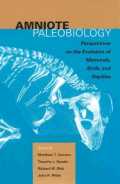
|
|
Birds of Two Worlds: The Ecology and Evolution of MigrationEditors: Russell Greenberg and Peter P Marra
Johns Hopkins University Press
2005
"In Birds of Two Worlds Russell Greenberg and Peter Marra bring together the world's experts on avian migration to discuss its ecology and evolution. The contributors move the discussion of migration to a global stage, looking at all avian migration systems and delving deeper into the evolutionary foundations of migratory behavior. Readers interested in the biology, behavior, ecology, and evolution of birds have waited a decade to see a worthy successor to the earlier classics."
|
Buy from amazon.co.uk 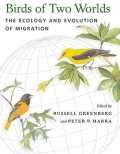
|
|
Variation: A Central Concept in BiologyEditor: Benedikt Hallgrímsson & Brian Hall
Academic Press
2005
"Darwin's theory of evolution by natural selection was based on the observation that there is variation between individuals within the same species. This fundamental observation is a central concept in evolutionary biology. However, variation is only rarely treated directly. It has remained peripheral to the study of mechanisms of evolutionary change. The explosion of knowledge in genetics, developmental biology, and the ongoing synthesis of evolutionary and developmental biology has made it possible for us to study the factors that limit, enhance, or structure variation at the level of an animals' physical appearance and behavior. Knowledge of the significance of variability is crucial to this emerging synthesis. This volume situates the role of variability within this broad framework, bringing variation back to the center of the evolutionary stage."
|
Buy from amazon.co.uk 
|
|
Ecology and Evolution of Cooperative Breeding in BirdsEditor: Walter Koenig and Janis Dickinson
Cambridge University Press
2004
"Cooperative breeders are species in which more than a pair of individuals assist in the production of young. Cooperative breeding is found in only a few hundred bird species world-wide, and understanding this often strikingly altruistic behaviour has remained an important challenge in behavioural ecology for over 30 years. This book highlights the theoretical, empirical and technical advances that have taken place in the field of cooperative breeding research since the publication of the seminal work Cooperative Breeding in Birds: Long-term Studies of Behavior and Ecology. Organized conceptually, special attention is given to ways in which cooperative breeders have proved fertile subjects for testing modern advances to classic evolutionary problems including those of sexual selection, sex-ratio manipulation, life-history evolution, partitioning of reproduction and incest avoidance. It will be of interest to both students and researchers interested in behaviour and ecology."
|
Buy from amazon.co.uk 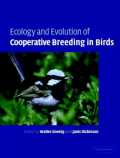
|
|
More Than Kin and Less Than Kind: The Evolution of Family ConflictDouglas W. Mock
Harvard University Press
2004
"Among seals and piglets, storks and burying beetles, in bird nests and beehives, from apples to humans, family conflicts can be deadly serious, determining who will survive and who will perish. When offspring compete for scarce resources, sibling rivalry kicks in automatically. Parents sometimes play favourites or even kill their young. In "More than Kin and Less than Kind", Douglas Mock tells us what scientists have discovered about this disturbing side of family dynamics in the natural world."
|
Buy from amazon.co.uk 
|
|
Speciation and Biogeography of BirdsIan Newton
Academic Press
2003
"This book should be of value to anyone interested in bird evolution and taxonomy, biogeography, distributional history, dispersal and migration patterns. It provides an up-to-date synthesis of current knowledge on species formation, and the factors influencing current distribution patterns. It draws heavily on new information on Earth history, including past glacial and other climatic changes, on new developments in molecular biology and palaeontology, and on recent studies of bird distribution and migration patterns, to produce a coherent account of the factors that have influenced bird species diversity and distribution patterns worldwide."
|
Buy from amazon.co.uk 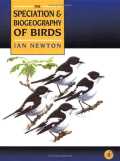
|
|
Evolution of Flightlessness in Rails (Gruiformes: Rallidae): Phylogenetic, Ecomorphological, and Ontogenetic PerspectivesBradley C. Livezey
Ornithological Monographs 53
American Ornithologists' Union
2003
|
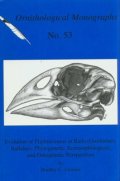 |
|
Evolutionary Ecology of Birds: Life Histories, Mating Systems and ExtinctionPeter Bennett and Ian P.F. Owens
Oxford Series in Ecology & Evolution
Oxford University Press
2002
"Birds show bewildering diversity in their life histories, mating systems and risk of extinction. Why do albatrosses delay reproduction for the first 12 years of their life while zebra finches breed in their first year? Why are fairy-wrens so sexually promiscuous while swans show lifelong monogamy? Why are over a quarter of parrot species threatened with global extinction while woodpeckers and cuckoos remain secure? Some of these topics are classic problems in natural and sexual selection, while others have arisen in the last decade, such as variation in genetic mating systems or extinction risk. Birds offer a unique opportunity for investigating these questions because they are exceptionally well-studied in the wild. By employing phylogenetic comparative methods and a database of up to 3,000 species, the authors identify the ecological and evolutionary basis of many of these intriguing questions. They also highlight remaining puzzles and identify a series of challenges for future investigation. This is the most comprehensive reappraisal of avian diversity since David Lack's classic "Ecological Adaptions for Breeding in Birds". It is also the most extensive application of modern comparative methods yet undertaken. This novel approach demonstrates how an evolutionary perspective can reveal the general ecological processes that underpin contemporary avian diversity on a global scale." Contents: Comparative biology of birds; Comparative methods; Natural selection and diversity in life histories; Diversity among living species; Patterns of covariation between life history traits; Ecological basis of life history and diversity; Further problems; Sexual selection and diversity in mating system; Variation in mating systems and sexual dimorphism; Ecological basis of mating system diversity; Ecological basis of sexual dimorphism; Further problems; Birth and death of bird species; Variation in extinction risk and species richness; Explaining variation and extinction risk; Explaining variation in species richness; Further problems; Conclusions.
|
Buy from amazon.co.uk 
|
|
Avian Incubation: Behaviour, Environment and EvolutionEditor: D.C. Deeming
Oxford University Press
2002
"This is the first scientific review of all factors affecting incubation in avian nests. These range from nest construction, egg characteristics and patterns of embryonic development. There is an extensive section describing incubation behaviour of parents and embryos, and there are chapters reviewing brood patch physiology and the various factors determining the incubation environment, including nest microbiology. Another section provides chapters giving detailed descriptions of examples of unusual aspects of avian incubation, whilst the final section provides consideration of the ecological, energetic and fitness cost of incubation. Written by authorities in their respective fields from around the world, this provides a comprehensive review of this critical aspect of avian reproduction. Much of the data included has not been previously published, and so Avian Incubation is not only an extensive reference text but is also a valuable contribution to our basic understanding of incubation." Contents: D C Deeming: Importance and Evolution of Incubation in Avian reproduction; M H Hansell and D C Deeming: Location Structure and Function of Incubation Sites; D C Deeming: Functional Characteristics of Eggs; D C Deeming: Embryonic Development and Utilisation of Egg Components; C M Vleck: Hormonal Control of Incubation Behaviour; D C Deeming: Behaviour Patterns During Incubation; R B Brua: Parent-Embryo Interactions; R W Lea abd H Klandorf: The Brood Patch; J S Turner: Maintenance of Egg Temperature; A Ar and Y Sidis: Nest Microclimate During Incubation; D C Deeming: Patterns and Significance of Egg Turning; G K Baggott and K Graeme-Cook: Microbiology of Natural Incubation; D T Booth and D N Jones: Underground Nesting in the Megapodes; W A Calder III: Characteristics and Constraints of Incubation in Hummingbirds; F R Handsworth and M A Voss: Intermittent Incubation: Predictions and Tests for Time and Heat Allocations; C Carey: Incubation in Extreme Environments; S G Sealy, D G McMaster and B D Peer: Tactics of Obligate Brood Parasites to Secure Suitable Incubators; P N Hebert: Ecological Factors Affecting Initiation of Incubation Behaviour; T J Underwood and S G Sealy: Adaptive Significance of Egg Colouration; J M Tinbergen and J B Williams: Energetics of Incubation; J Reid, P Monaghan and R Nager: Incubation and the Costs of Reproduction; D C Deeming: Perspectives in Avian Incubation.
|
Buy from amazon.co.uk 
|
|
The Evolution of Begging: Competition, Cooperation and CommunicationJonathan Wright and Marty L. Leonard
Kluwer Academic Publishers
2002
"Begging by nestling birds has become the model system for investigating evolutionary conflicts of interest within families and their theoretical resolution provided by honest signals of offspring need. In response to the recent explosions of scientific papers on the revolution of begging; we have brought together twenty-four original contributions from major researchers in all areas of this dynamic field. Organised into six sections: I: Theoretical approaches; II: Begging as a signal; III: Nestling physiology; IV: Sibling competition; V: Brood parasitism; and VI: Statistical approaches; this book is primarily aimed at research scientists and those at the graduate student level. For the first time, the theoretical and empirical literature on begging is fully reviewed. New ideas and data are also presented from a wide range of natural systems, and each chapter ends with suggestions for future study."
|
Buy from amazon.co.uk 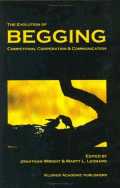
|
|
A Red Bird in a Brown Bag: The Function and Evolution of Colorful Plumage in the House FinchGeoffrey E. Hill
Oxford University Press
2002
"This is an account of studies of the function and evolution of colorful plumage in the House Finch. It is also an engaging study on the evolution of sexual selection in birds and a lively portrait of the challenges and constraints of experimental design facing any field investigator working with animal behavior. Part I sets the stage for modern studies of the function of plumage coloration with a review of the nineteenth and beginning of the twentieth centuries. Part II focuses on the proximate control and present function of plumage coloration. Part III takes a more explicitly evolutionary approach to the study of plumage coloration using biogeography and phylogeny to test hypotheses for why specific forms of plumage color display have evolved. It concludes with an account of comparative studies that have been conducted in the House Finch and other cardueline finches and the insight these studies have provided on the evolution of carotenoid-based ornamental coloration."
|
Buy from amazon.co.uk 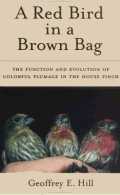
|
|
New Perspectives on the Origin and Early Evolution of Birds: Proceedings of the International Symposium in Honor of John H. OstromEdited by J Gauthier and LF Gall
Peabody Museum of Natural History
2001
A collection of papers presented by leading researchers in paleontology and ornithology at a two-day international conference of the same name, held in New Haven, Connecticut, on February 13 and 14, 1999, along with additional papers not presented at the symposium, for a total of 31 articles. Contents:
- Foreword - Peter Wellnhofer
- Introduction - Jacques Gauthier
- Feathered dinosaurs, flying dinosaurs, crown dinosaurs, and the name "Aves" - Jacques Gauthier & Kevin de Queiroz
- How can we define a feathered dinosaur as a bird? - Ji Qiang & Ji Shu-an
- Phylogenetic relationships among coelurosaurian theropods - Mark A. Norell, James M. Clark & Peter J. Makovicky
- Alvarezsaurids: Birds or ornithomimosaurs? - Paul C. Sereno
- Arctometatarsalia revisited: The problem of homoplasy in reconstructing theropod phylogeny - Thomas R. Holtz, Jr.
- Phylogenetic relationships among basal birds - Luis M. Chiappe
- The basal clades of modern birds - Joel Cracraft & Julia Clarke
- Morphological and molecular support for nonmonophyly of the Galloanserae - Per G.P. Ericson, Thomas J. Parsons & Ulf S. Johansson
- The beginnings of feathers - Alan H. Brush
- Evolutionary implications of possible protofeather structures associated with a specimen of Shuvuuia deserti - Mary Higby Schweitzer
- Methods of inferring unknown aspects of organisms and the behavioral origins of bird flight - E. Nicholas Arnold
- Ecomorphology of avian and nonavian theropod phalangeal proportions: Implications for the arboreal versus terrestrial origin of bird flight - James A. Hopson
- Flight capability and habits of Confuciusornis - Zhonghe Zhou & James O. Farlow
- Stages in the origin of bird flight: Beyond the arboreal-cursorial dichotomy - Kevin Padian
- Forelimb shape and the evolution of birds - Gareth J. Dyke & Jeremy M. V. Rayner
- The wrist of Allosaurus - Saurischia: Theropoda, with observations on the carpus in theropods - Daniel J. Chure
- The function of the manus and forelimb of Deinonychus antirrhopus and its importance for the origin of avian flight - Alan D. Gishlick
- The function of the supracoracoideus muscle during takeoff in the European Starling - Sturnus vulgaris: Maxheinz Sy revisited - Alan J. Sokoloff, Jennifer Gray-Chickering, Jason D. Harry, Samuel O. Poore & George E. Goslow, Jr.
- The evolutionary history of the theropod caudal locomotor module - Stephen M. Gatesy
- Why thrust and ground effect are more important than lift in the evolution of sustained flight - Phillip Burgers & Kevin Padian
- On the origin and evolution of flapping flight aerodynamics in birds - Jeremy M. V. Rayner
- A new perspective on the origin of endothermy - Colleen G. Farmer
- The bone histology of basal birds in phylogenetic and ontogenetic perspectives - Armand de Ricqles, Kevin Padian & John R. Horner
- Functional morphology of the reptilian and avian respiratory systems and its implications for theropod dinosaurs - Steven F. Perry
- Respiratory structure and function in theropod dinosaurs and some related taxa - Terry D. Jones & John A. Ruben
- Were the respiratory complexes of predatory dinosaurs like crocodilians or birds? - Gregory S. Paul
- The false issues of bird origins: An historiographic perspective - Kevin Padian
- Naive falsification and the origin of birds - Peter J. Makovicky & Gareth J. Dyke
- Time and trees: A quantitative assessment of temporal congruence in the bird origins debate - Christopher A. Brochu & Mark A. Norell
- The role of Protoavis in the debate on avian origins - Lawrence M. Witmer
- Biostratigraphy and avian origins in northeastern China - Joshua B. Smith, Jerald D. Harris, Gomaa I. Omar, Peter Dodson & You Hailu
|
Buy from amazon.co.uk 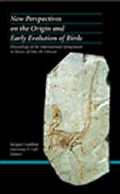
|
|
The Origin and Evolution of BirdsAlan Feduccia
Yale University Press
1999
" From the author of the acclaimed Age of Birds this is an authoritative volume, and profusely illustrated discussion of the origin of birds and of avian flight which draws on fossil evidence and studies of the structure and biochemistry of living birds. Feduccia begins with an overview of bird evolution, giving his opinions about one of the most controversial problems in invertebrate palaeontology - whether birds evolved directly from bipedal, terrestrial dinosaurs or from the precursors of dinosaurs, small arboreal thecodonts perhaps. On the way he provides information about the origin of avian flight and feathers, discusses the most dramatic discoveries in avian palaeontology in the past few decades - the `opposite birds', the dominant landbirds of the Mesozoic - and argues that the evolution of birds followed a similar pattern to that of mammals, an explosive evolution lasting only 5-10 million years. The second half is concerned with the modern evolution of birds, and a comprehensive summary is provided of the evolution of the raptors, the rise of the landbirds, and the evolution of flightlessness."
|
Buy from amazon.co.uk 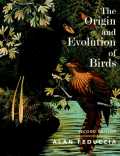
|
|
The Rise of Birds: 225 Million Years of EvolutionSankar Chatterjee
Yale University Press
1999
"This text is a detailed, illustrated review of the fossil record of birds in a modern context. Palaeontologist, Chatterjee, provides a chronology documenting the long odyssey of birds since Protoavis - which may have taken to the air some 75 million years before the widely known "first bird", Archaeopterix. Throughout the text, the author offers details from the history of birds past and present, including: some intelligent theropods such as dromaeosaurs were arboreal and could climb trees with their swivel wrist joint and stiff tail, and glide from tree to ground; the discovery of downy theropod dinosaurs from China indicates that upper jaw mobility, not feathers, is the most distinctive characteristic of birds; and most birds were wiped out 65 million years ago, along with dinosaurs, by large meteoritic impacts. However, a few lineages of birds rebounded from this catastrophe and underwent an explosive evolution. The volume also discussed the significance of the many recently discovered bird and possible bird fossils, from Europe to China to Latin America. Chatterjee outlines varying theories of how animal flight developed and explains, in terms of comparative anatomy, what makes a bird a bird."
|
Buy from amazon.co.uk 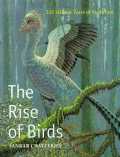
|
|
The Evolution of Avian Breeding SystemsJ. David Ligon
Oxford University Press
1999
"The Evolution of Avian Breeding Systems" deals with three of the most conspicuous and fascinating aspects of the reproductive biology of birds: sexual selection, parental care, and mating systems. Ever since Darwin, birds have provided much of the stimulus for study of these interrelated topics. Researchers have been fascinated by the extent of sexual dimorphism in plumage colours among avian species, and the puzzling development of flamboyant ornamentation or complex courtship displays in male birds. This book provides empirical assessments of the main theories of mate choice by females, and also includes related topics such as the role of sexual selection in speciation. Although most avian species are socially monogamous, others exhibit polygamy, cooperative and classical polyandry, or lek-promiscuity. The effects of extra pair copulations on paternity, as well as their possible effects on the evolution of mating systems are also considered. Chapters devoted to each of the major mating system summarize current thinking about the factors maintaining them. Throughout the book, theoretical discussion is illustrated with examples, drawn from work on a wide range of avian species. This is the first book to combine the themes of sexual selection, parental care, and mating systems, and to focus exclusively on birds. It will be welcomed by researchers in animal behaviour and ornithology with an interest in mating systems, as well as by graduate and advanced undergraduate students taking courses in this area. It is illustrated throughout with original line drawings."
|
Buy from amazon.co.uk 
|
|
Ecology and Evolution of Darwin's FinchesPeter R. Grant
Princeton University Press
1999 (orig edition 1986)
"After his famous visit to the Galapagos Islands, Darwin speculated that "one might fancy that, from an original paucity of birds in this archipelago, one species had been taken and modified for different ends." This book is the classic account of how much we have since learned about the evolution of these remarkable birds. Based upon over a decade's research, Grant shows how interspecific competition and natural selection act strongly enough on contemporary populations to produce observable and measurable evolutionary change. In this new edition, Grant outlines new discoveries made in the thirteen years since the book's publication. Ecology and Evolution of Darwin's Finches is an extraordinary account of evolution in action."
|
Buy from amazon.co.uk 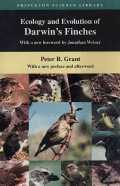
|
|
Parasitic Birds and Their Hosts: Studies in CoevolutionEditors: Stephen I. Rothstein & Scott K. Robinson
Oxford University Press
1999
"This book is the first to present a comprehensive overview of the diverse kinds of birds and interactions involved in avian brood parasitism. This phenomenon has attracted the interests of naturalists and evolutionists since Darwin, yet very few researchers applied modern evolutionary theory and experimental methods to the study of the adaptations for and against brood parasitism by parasitic birds and their hosts until 25 years ago. The amount of work being done on parasitic birds has grown at an accelerating rate in the last decade as numerous researchers have begun to pursue the study of these birds." Contents:
Preface; Dedication to Herbert Friedmann; Section 1 - Overview and Commentary; Stephen I. Rothstein and Scott K. Robinson: Ch. 1: The Evolution and Ecology of Brood Parasitism; Section 2 - Coevolution Between Cuckoos and Their Hosts; Nicholas N. Davies and Michael de L. Brooke: Ch. 2: Cuckoos Versus Hosts: Experimental Evidence for Coevolution; Hiroyoshi Higuchi: Ch. 3: Host Use and Egg Color of Japanese Cuckoos; Hiroshi Nakamura, Satoshi Kubota, and Reiko Suzuki: Ch. 4: Coevolution
Between the Common Cuckoo and Its Major Hosts in Japan: Stable Versus Dynamic Specialization on Hosts; Manuel Soler, Juan J. Soler, and Juan G. Martinez: Ch. 5: Duration of Sympatry and Coevolution Between the Great Spotted Cuckoo and its Primary Host, the Magpie; Luis Arias-de-Reyna: Ch. 6: Coevolution of the Great Spotted Cuckoo and its Hosts; Brian J. Gill: Ch. 7: Behavior and Ecology of the Shining Cuckoo Chrysococcyx lucidus; Robert B. Payne and Laura L. Payne: Ch. 8: Nestling
Eviction and Vocal Behavior in the Australian Glossy Cuckoos Chrysococcyx Basalis and C. lucidus; Section 3 - Coevolution Between Cowbirds and Their Hosts; Rosendo M. Fraga: Ch. 9: Interactions of the Parasitic Screaming and Shiny Cowbirds with a Shared Host, the Bay-winged Cowbird; Spencer G. Sealy, Diane L. Neudorf, Keith A. Hobson, and Sharon A. Gill: Ch. 10: Nest Defense by potential Hosts of the Brown-headed Cowbird: Methodological Approaches, Benefits of Defense, and Coevolution; Gustavo
H. Kattan: Ch. 11: Impact of Brood Parasitism: Why do House Wrens Accept Shiny Cowbird Eggs?; Section 4 - Models of Parasite-Host Coevolution: Equilibrium Versus Lag; Arnon Lotem and Hiroshi Nakamura: Ch. 12: Evolutionary Equilibria in Avian Brood Parasitism: An Alternative to the "Arms Race-Evolutionary Lag" Concept; Eivan Roskaft and Arne Moksnes: Ch. 13: Coevolution Between Brood Parasites and Their Hosts: An Optimality Theory Approach; Ian G. McLean and Richard F. Maloney: Ch. 14: Brood Parasitism, Recognition, and Response: The Options; Section 5 - Effects of Parasitism on Host Population Dynamics; Cheryl L. Trine, W. Douglas Robinson, and Scott K. Robinson: Ch. 15: Consequences of Brown-headed Cowbird Brood Parasitism for Host Population Dynamics; James N.M. Smith and Isla H. Myers-Smith: Ch. 16: Spatial Variation in Parasitism of Song Sparrows by Brown-headed Cowbirds; Alexander Cruz, William Post, Janes W. Wiley, Catherine P. Ortega, Tammie K. Nakamura, and John W. Prather: Ch. 17: Potential Impoacts of Cowbird Range Expansion in Florida; Section 6 - Consequences of Parasitism for the Mating Systems and Life Histories of Brood Parasites; Phoebe Barnard: Ch. 18: Variability in the Mating Systems of Parasitic Birds; Section 7 - Conspecific Brood Parasitism; Michael D. Sorenson: Ch. 19: Patterns of Parasitic Egg Laying and Typical Nesting in Redhead and Canvasback Ducks; Harry W. Power: Ch. 20: Quality Cotrol and the Important Questions in Avian Conspecific Parasitism; Anders P. Moller: Ch. 21: Density-dependent Intraspecific Nest Parasitism and Anti-parasite Behavior in the Barn Swallow Hirundo Rustica; Wendy M. Jackson: Ch. 22: Egg-discrimination and Egg-color Variability in the Northern Masked Weaver: The Importance of Conspecific Versus Interspecific Parasitism; Section 8 - Major Unresolved Questions; Stephen I. Rothstein and Scott K. Robinson: Ch. 23: Major Unanswered Questions in the Study of Avian Brood Parasitism
|
Buy from amazon.co.uk 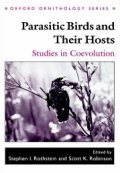
|
|
Avian Growth and Development: Evolution Within the Altricial-Precocial SpectrumEditors: J. Matthias Starck & Robert E. Ricklefs
Oxford University Press
1998
"Although birds have a rather uniform body plan and physiology, they exhibit marked variation in development type, parental care, and rate of growth. This makes them ideal for studying and understanding evolutionary adaptation. Presenting an integrative perspective of organism biology, ecology, and evolution, this book is a case study in evolutionary diversification of life histories." Contents: J. Matthias Starck and Robert E. Ricklefs: Introduction; J. Matthias Starck and Robert E. Ricklefs: Patterns of Development: The Altricial-Precocial Spectrum; Robert E. Ricklefs and J. Matthias Starck: Embryonic Development; Structural Variants and Invariants in Avian Embryonic and Postnatal Development; Carol M. Vleck and Theresa L. Bucher: Energy Metabolism, Gas Exchange, and Ventilation; G. Henk Visser: Development of Temperature Regulation; Esa Hohtola and Henk Visser: Development of Locomotion and Endothermy in altricial and precocial birds; F.M. Anne McNabb, Colin G. Scanes, and Michael Zeman: The Endocrine System; Victor Apanius: The Immune System; Heinz Duttman and H. Heiner Bergmann: Development of Behavior; J. Matthias Starck and Robert E. Ricklefs: Variation, Constraint, and Phylogeny. Comparative Analysis of Variation in Growth; Robert E. Ricklefs, J. Matthias Starck, and Marek Konarzewski: Internal Constraints on Growth in Birds; William A. Schew and Robert E. Ricklefs: Developmental Plasticity; Arie van Noordwijk and Henry Marks: Genetic Aspects of Growth; Sabine Gebhardt-Henrich and Heinz Richner: Causes of Growth Variation and its Consequences for Fitness; Marek Konarzewski, Sebastian Jooijman, and Robert E. Ricklefs: Models for Avian Growth and Development; Robert E. Ricklefs and J. Matthias Starck: The Evolution of Developmental Mode in Birds; J. Matthias Starck and Robert E. Ricklefs: Data Set of Avian Growth Parameters; Summary, Conclusions, and Research Agenda.
|
Buy from amazon.co.uk 
|
|
Avian Molecular Evolution and SystematicsDavid P. Mindell
Academic Press
1997
"The use of DNA and other biological macromolecules has revolutionized systematic studies of evolutionary history. Methods that use sequences of nucleotides and amino acids are now routinely used as data for addressing evolutionary questions that, although not new questions, have defied description and analysis. The world-renowned contributors use these new methods to unravel particular aspects of the evolutionary history of birds. Avian Molecular Evolution and Systematics presents an overview of the theory and application of molecular systematics, focusing on the phylogeny and evolutionary biology of birds. New, developing areas in the phylogeny of birds at multiple taxonomic areas are covered, as well as methods of analysis for molecular data, evolutionary genetics within and between bird populations, and the application of molecular-based phylogenies to broader questions of evolution."
|
Buy from amazon.co.uk 
|
|
Host-Parasite Evolution: General Principles and Avian ModelsDale H. Clayton
Oxford University Press
1997
"This is a question-oriented volume with a solid organismal foundation that will help to bridge the gap between evolutionary ecologists and parasitologists. A range of experts have written chapters that review general concepts and provide a detailed survey of the parasites of a major group of hosts. The book concludes with extensive reviews of methods used to study bird parasites. It is a novel and valuable tool for anyone interested in understanding host-parasite interactions, particularly from an evolutionary perspective." Contents: Chapter 1 - Introduction; Part I: General Principles; Chapter 2 - Parasite-mediated natural selection; Chapter 3 - Immune defence: genetic control; Chapter 4 - Behavioural defence; Chapter 5 - Parasite-mediated sexual selection: endocrine aspects; Chapter 6 - Parasitism and the evolution of host life history; Chapter 7 - Host-parasite processes and demographic consequences; Chapter 8 - The role of parasites in bird conservation; Chapter 9 - Community ecology of parasites and free-living animals; Chapter 10 - Comparative studies of host parasite communities; Chapter 11 - Host-parasite cospeciation: history, principles and prospects; Chapter 12 - Host-parasite cospeciation, host switching and missing the boat; Part II: Avian Models; Chapter 13 - Birds as habitat for parasites; Chapter 14 - Viruses, bacteria and fungi of birds; r s1hapter 15 - Protozoa, helminths and arthropods of birds; Chapter 16 - Avian brood parasites; Chapter 17 - Conclusion: Evolution of host-parasite interactions.
|
Buy from amazon.co.uk 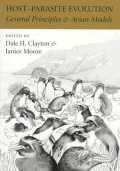
|
|
Ecology and Evolution of Acoustic Communication in BirdsEditors: Donald E. Kroodsma and Edward H. Miller
Cornell University Press
1996
"Twenty-five invited papers reviewing the contributing ornithologists' current research in birds' acoustic communication with an ecological and evolutionary focus, and also identifying the areas they feel will dominate future research efforts. The discussions center around the areas of vocal development, vocal repertoires, vocal variation in time and space, the control and recognition of vocalizations, and the behavior of communicating. The specific topics are anything but boring and include such diverse offerings as bird communication in a noisy world, how birds develop their songs, and the use of interactive playback to understand bird behavior."
|
Buy from amazon.co.uk 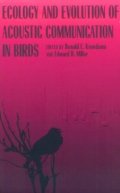
|
|
The Beak of the Finch: A Story of Evolution in Our TimeJonathan Weiner
Alfred A. Knopf
1994
"On a desert island in the heart of the Galapagos archipelago, where Darwin received his first inklings of the theory of evolution, two scientists, Peter and Rosemary Grant, have spent twenty years proving that Darwin did not know the strength of his own theory. For among the finches of Daphne Major, natural selection is neither rare nor slow: it is taking place by the hour, and we can watch. In this dramatic story of groundbreaking scientific research, Jonathan Weiner follows these scientists as they watch Darwin's finches and come up with a new understanding of life itself. The Beak of the Finch is an elegantly written and compelling masterpiece of theory and explication in the tradition of Stephen Jay Gould."
|
Buy from amazon.co.uk 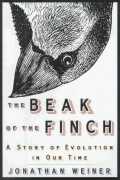

|
|
Dunnock Behaviour and Social EvolutionN.B. Davies
Oxford Series in Ecology & Evolution
Oxford University Press
1992
"At first sight just a small brown bird, the dunnock's unobtrusive appearance belies its extraordinary behaviour and mating patterns. In this book Nick Davies gives a full account of the mating systems of the dunnock or hedge sparrow, , which include pairs, a male with two females, two males with one female, and several males with several females. Detailed observations, elegant field experiments, and DNA fingerprinting are combined to show how this variable social organization from selfish individuals competing to maximize their own reproductive success. Further experiments reveal how the cuckoo may thwart the dunnock's parental efforts. David Quinn's exquisite drawings provide a visual summary of the birds' behaviour. All students of ecology, evolution, and animal behaviour will want to be familiar with this work, which addresses the wider issues of the influence of ecology on mating systems and the evolutionary significance of conflict within and between species."
|
Buy from amazon.co.uk 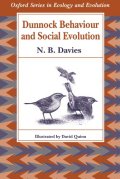
|
|
Phylogeny and Classification of the Birds: A Study in Molecular EvolutionCharles G. Sibley and Jon E. Ahlquist
Yale University Press
1991
"This book presents the results of a study of the evolutionary history and classification of living birds based on comparisons of the DNAs (genetic material) of about 1700 species. Sibley and Ahlquist's "DNA-DNA hybridization" technqiue is a biochemical method that measures the degree of genetic similarity between the DNAs of different species of other groups of organisms, but this book includes the largest set of DNA comparisons for any group. Divided into two sections, the book first covers the methodology used and then presents the phylogeny and classification of birds based on this method. The latter section provides a chronological survey of the classification of birds since Linnaeus (1758) and details for each group of birds since that time. The history of the classification of each order and family is reviewed, morphological chracters are noted, and evidence of the phylogeny and genetic relationships of each group is given. With 385 figures of DNA melting curves and phylogenetic trees, plus a bibliography, this book should be a valuable resource for ornithologists and other biologists."
|
Buy from amazon.co.uk 
|
|
Bird-Parasite Interactions: Ecology, Evolution and BehaviourEditor: J.E. Loye
Oxford University Press
1991
"Birds are hosts to many parasites, internal and external. The parasites inevitably form a burden to the host bird and therefore may affect its ability to grow, survive, and reproduce; its behaviour; and the distribution and abundance of the whole species. In consequence, bird-parasite systems have attracted attention from diverse fields and the literature has been spread out in a wide range of specialized journals. The editors of this book have drawn together a comprehensive range of experts in the field to provide an invaluable reference of current work in bird-parasite interactions. The book is divided into four parts. The introduction provides the contemporary context of research in bird-parasite systems and presents case studies which combine theoretical concepts with experimental data. Subsequent parts focus on the ecology; behavioural responses; and the effect of parasitism on sexual selection."
|
Buy from amazon.co.uk 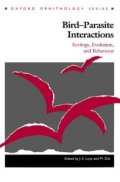
|
|
Inheritance and Natural HistoryR.J. Berry
Collins
New Naturalist 61
1977
"This absorbing book is about genetics as it applies to the world around us. Its main aim is to show the ways in which inherited variation can help to explain the properties of natural populations: the differences between individuals, the extent and mechanism for transmitting characteristics from one generation to another, and the factors which control the frequency of a trait in a local group. It is thus of interest not only to naturalists but also to farmers and gardeners - indeed it is highly relevant to each one of us in the context of modern social planning."
|
Buy from amazon.co.uk 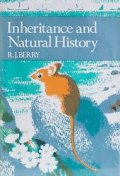
|
|
Evolution Illustrated By WaterfowlDavid Lack
Illustrations: Robert Gillmor
Blackwell Scientific Publications
1974
|
Buy from amazon.co.uk 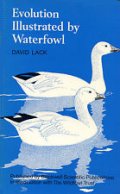
|
|
Man & Birds: Evolution and BehaviorAndrew Meyerriecks
Pegasus
1972
"From Charles Darwin to Konrad Lorenz, from the exotic Galapogos finches to the common robin, birds and new methods of studying them are revealing much that is relevant to the life of man. In Man and Birds two of the most intriguing aspects of modern biology, evolution and behavior, are woven together to form a clearer, more fascinating picture of how birds live, reproduce, and communicate than ever before."
|
Buy from amazon.co.uk 
|
|
Birds Around the World: A Geographical Look at Evolution and BirdsDean Amadon
Natural History Press
1966
|
Buy from amazon.co.uk 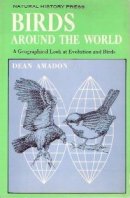
|
|
Evolution of Habit in BirdsEdmund Selous
Introduction: H.J. Massingham
Constable & Co. Ltd
1933
From the front cover: "This is one of Mr. Selous' most important contributions to scientific natural history. It should appeal especially to those who are even more interested into enquiries into the meaning of the present habits of birds, than in the habits themselves. These last are often very puzzling and, in the abundant absence of this kind of research, remain in different degrees deceptive or unintelligible. The evidence here presented is not merely cogent but demonstrative. Mr. Selous believes indeed that through intensive observation the "evolution of habit in birds" may not only be inferred, but in some cases actually seen. How, is the book's secret, which may be found out by reading it."
|
Buy from amazon.co.uk 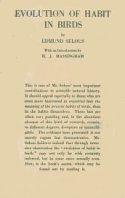
|
|